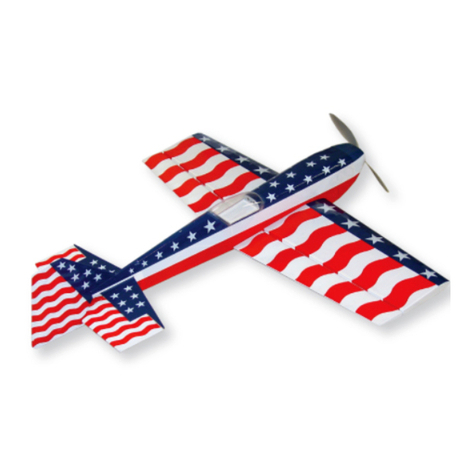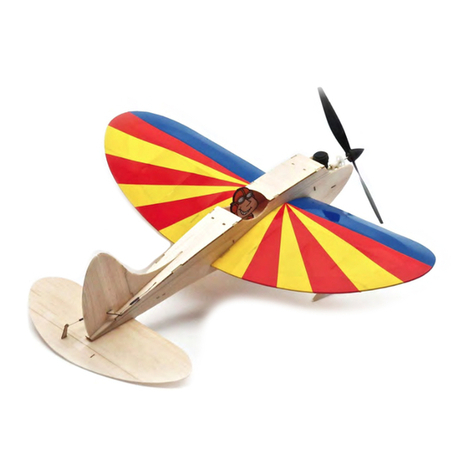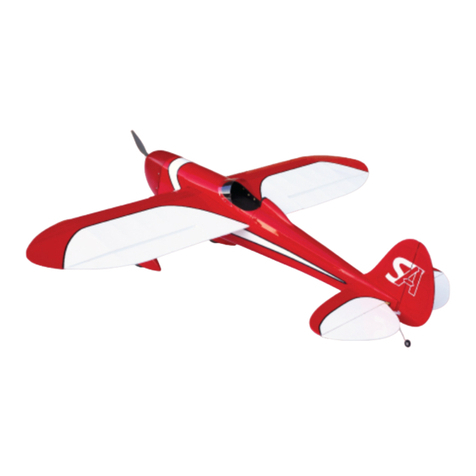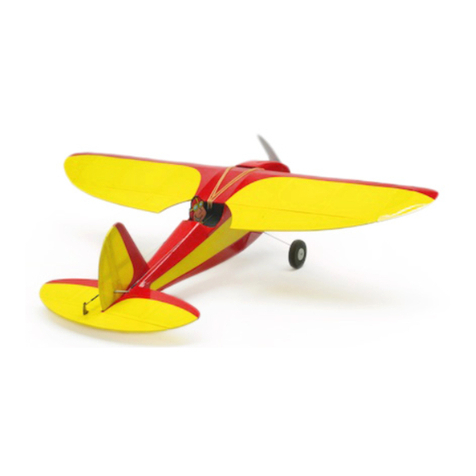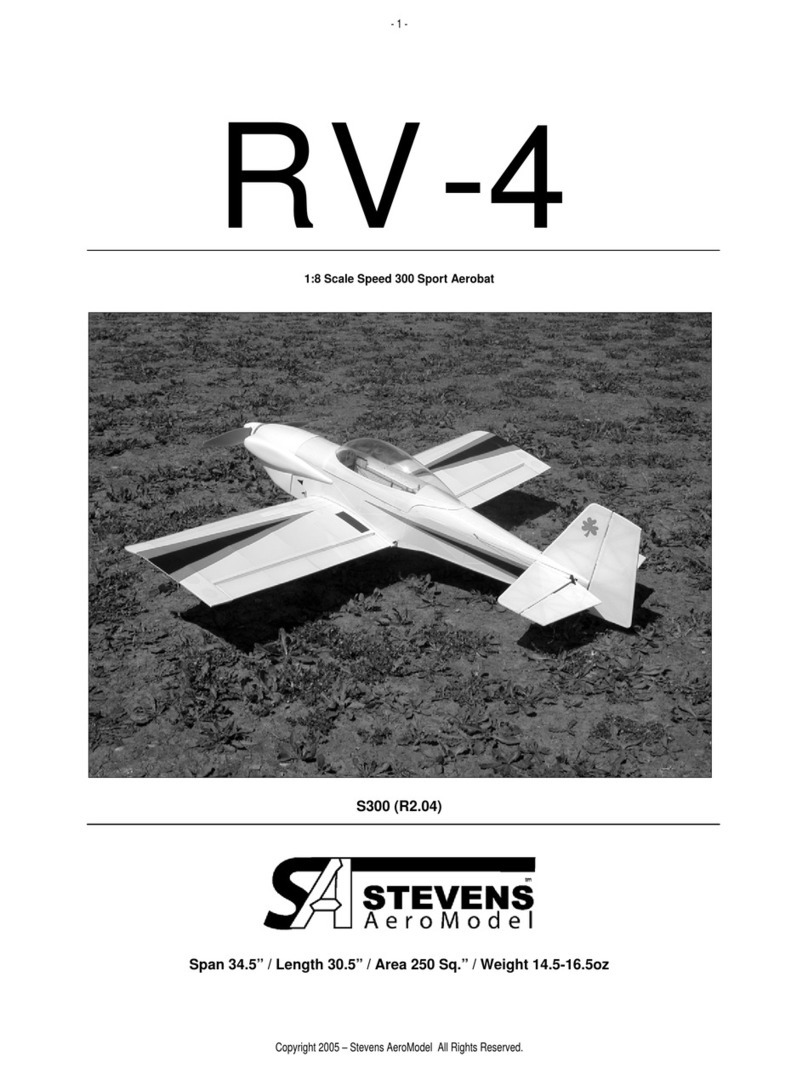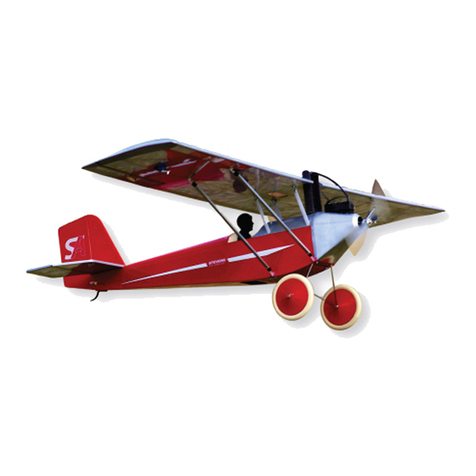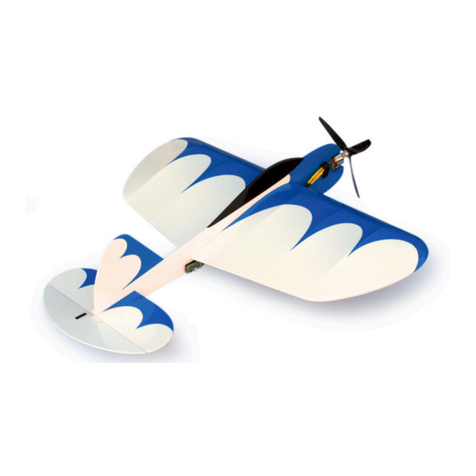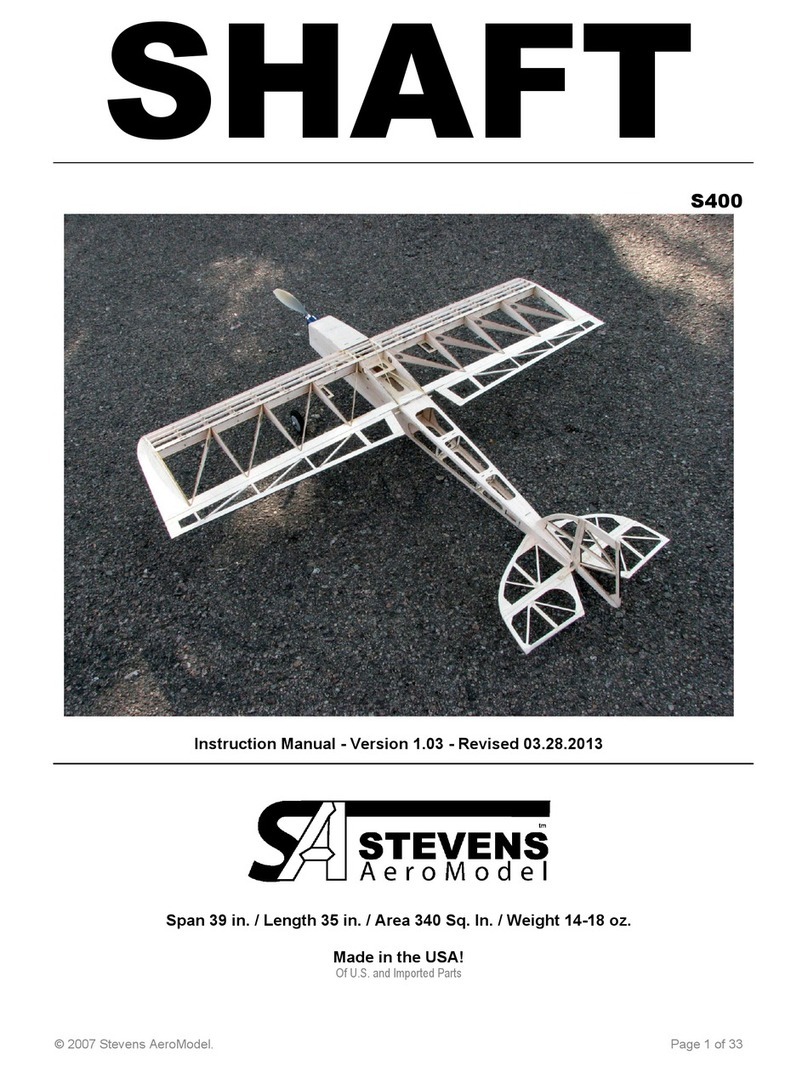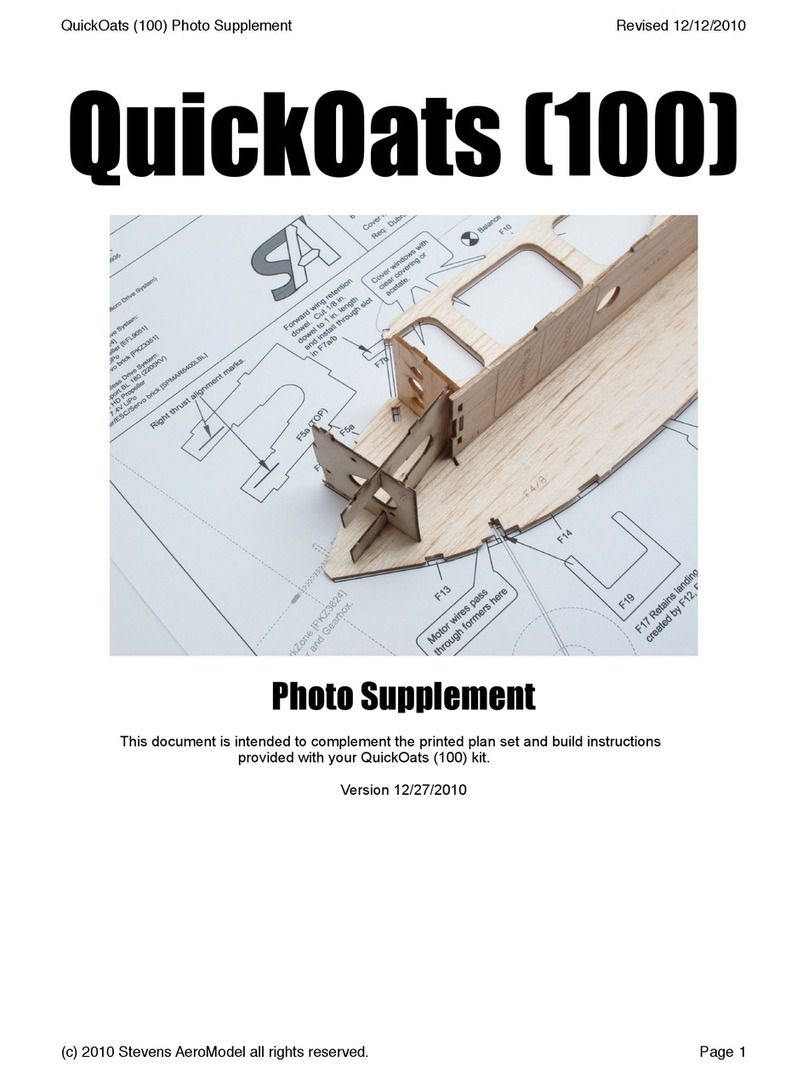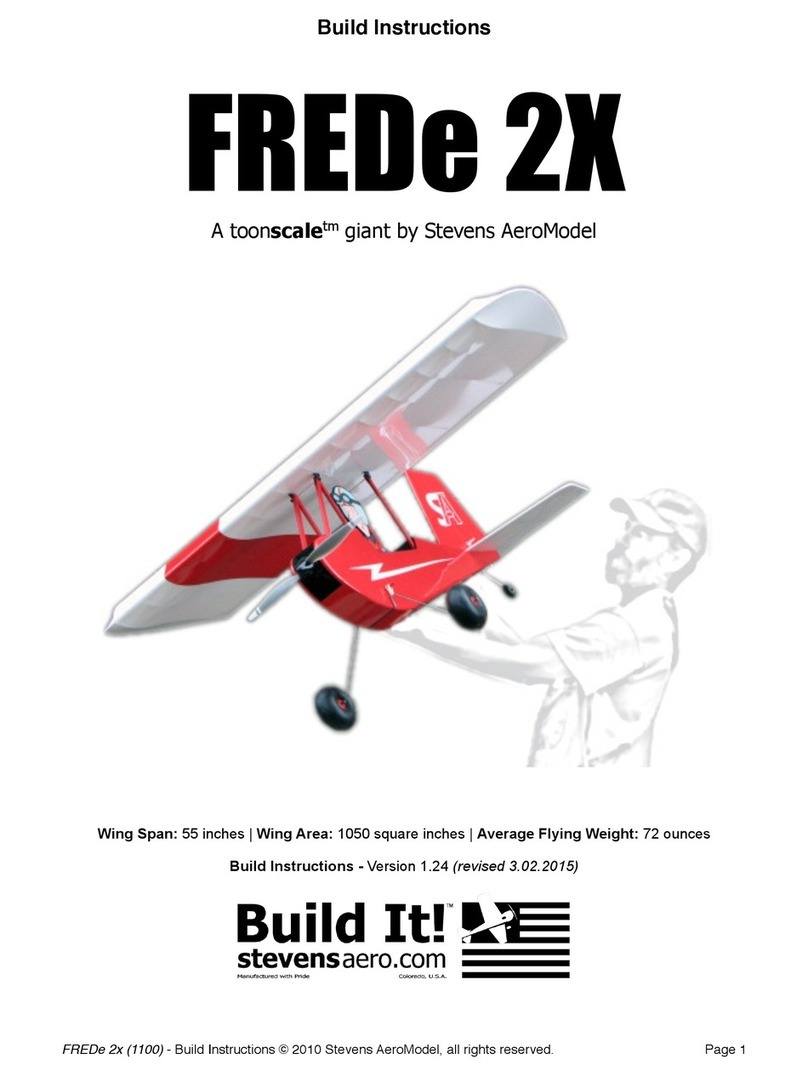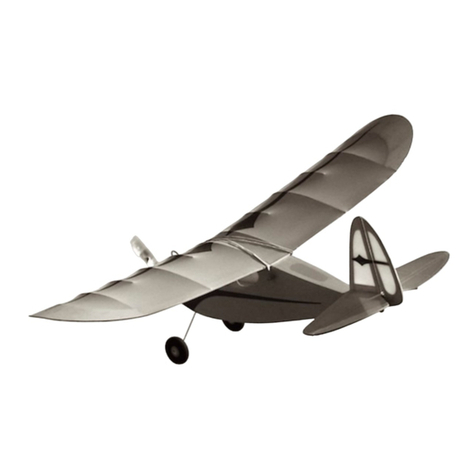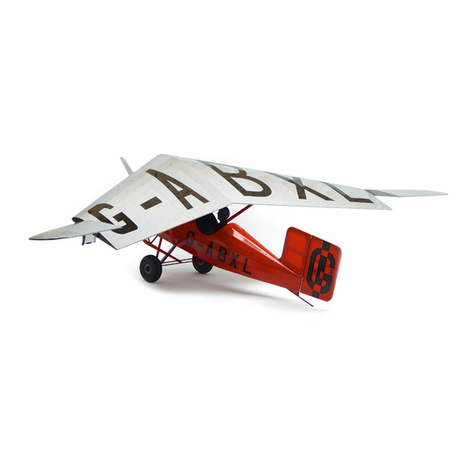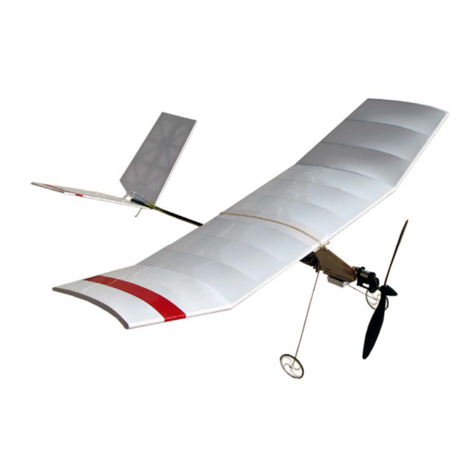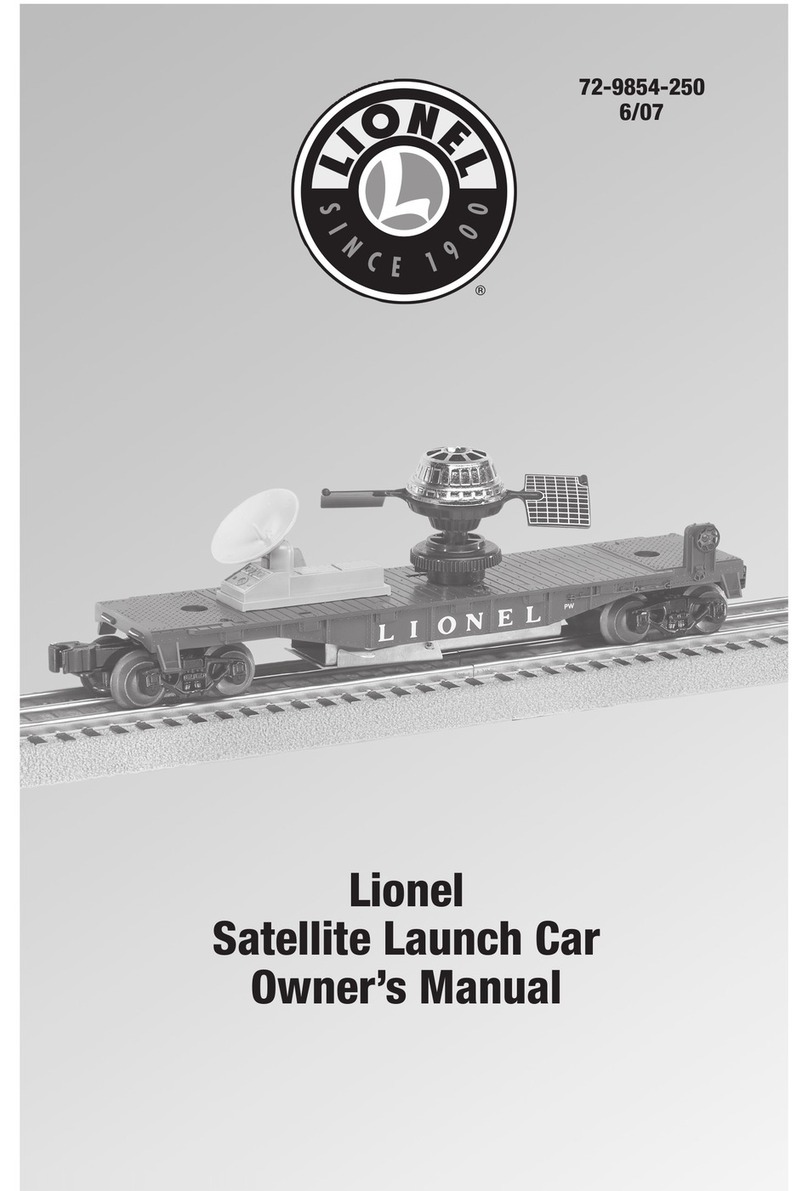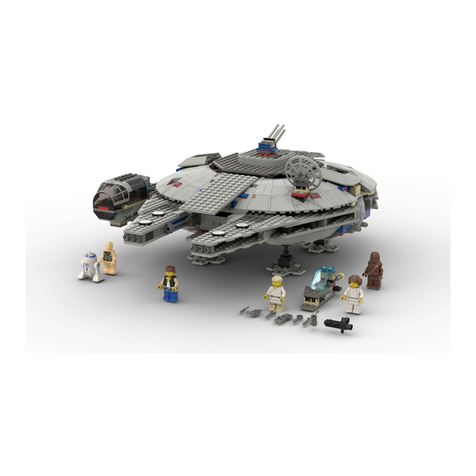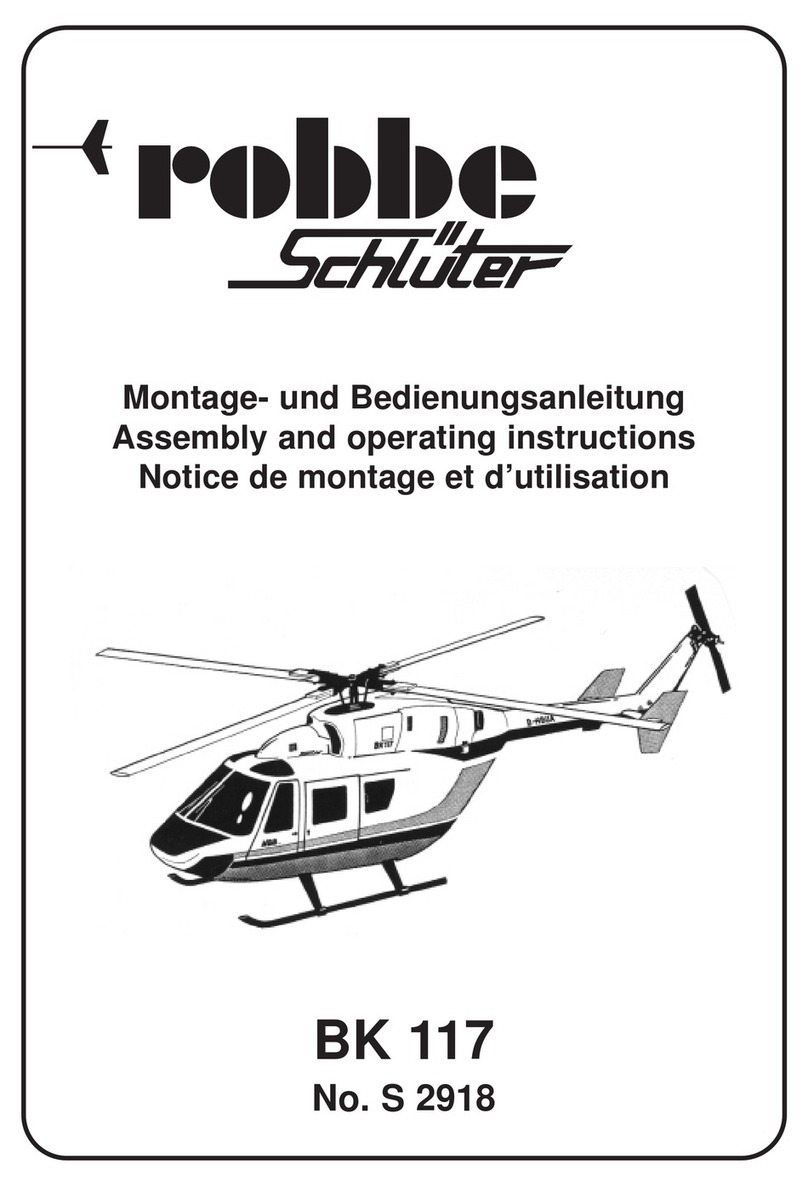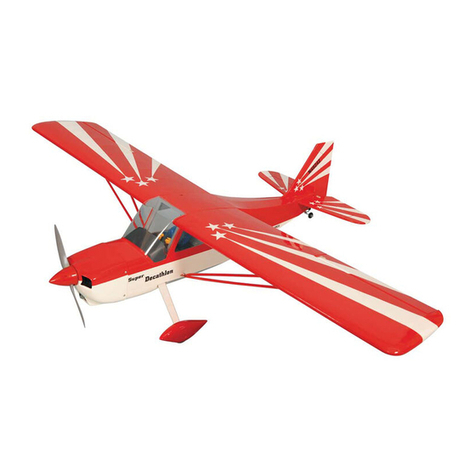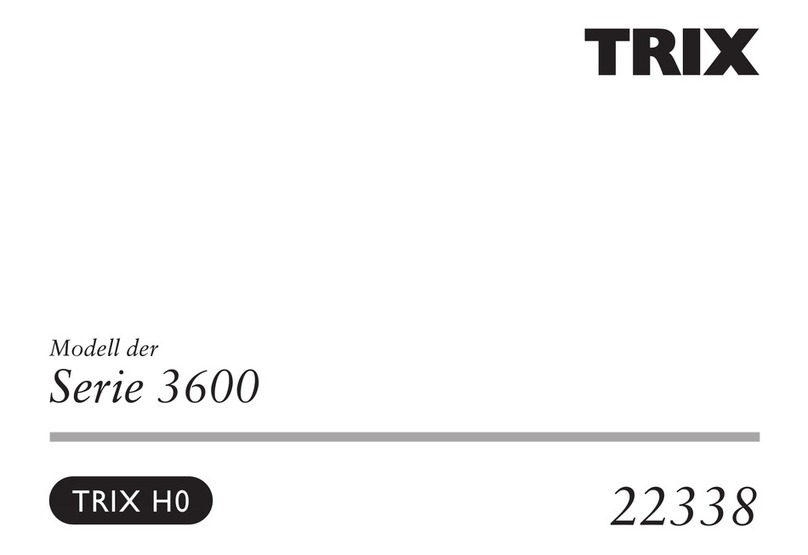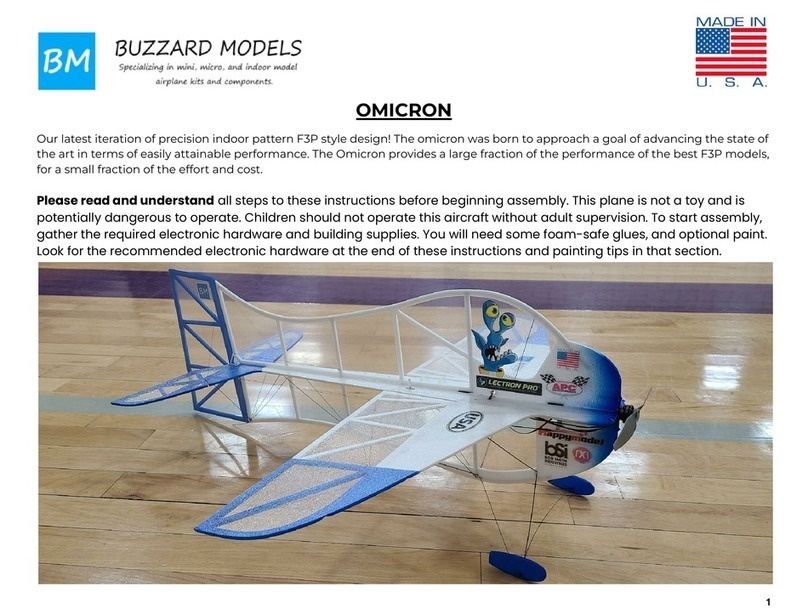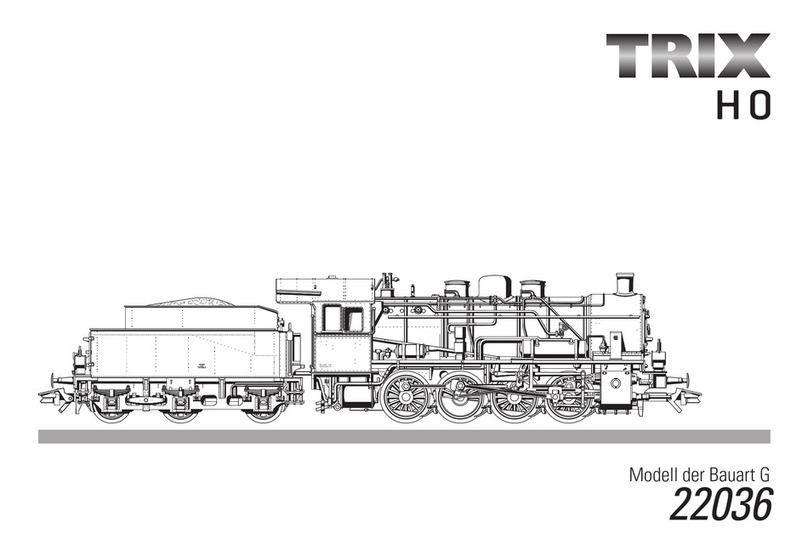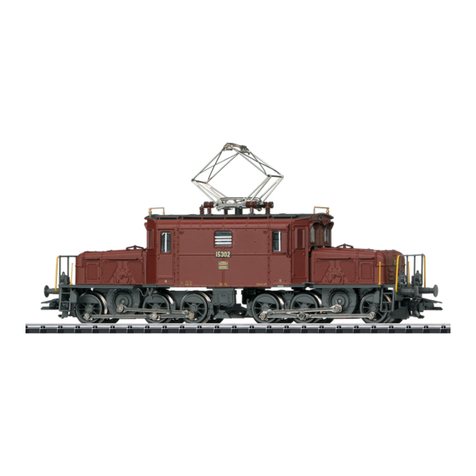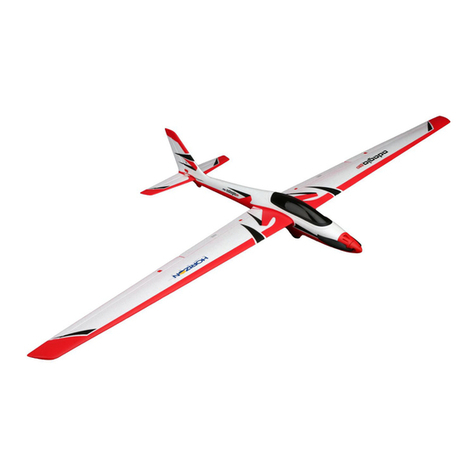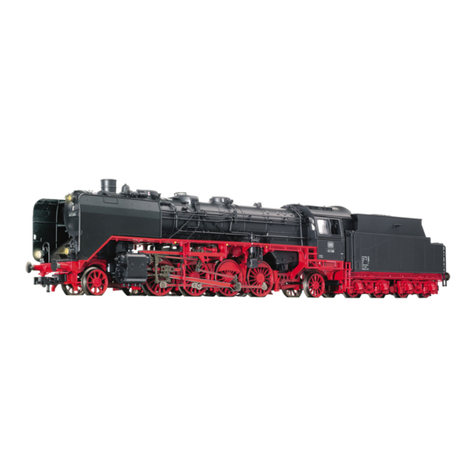
1. Balance the model. Balance the model 1-1/4 inches behind the leading edge of the wing – this is the starting
balance point (Center of Gravity or CG) and has been laser-marked on the wing of the glider as two small holes.
Suspend the model from your thumb and index nger at the balance points on right and left of wing. When
viewed from the side, the fuselage should generally hang level with the horizon. If the model hangs nose down,
remove clay ballast from the nose or add clay ballast to the tail. If the model hangs tail low with the nose pitched
up, add clay ballast to the nose of the model. Adjust the balance point then proceed to glide test your model.
2. Glide test. The purpose of this test is to check the overall behavior of the model prior to using it under a
powered launch. Do not neglect to perform this test as hard ground is a formidable opponent for the out of
trim motor-glider. Perform this test in near zero wind conditions outdoors or pick a large indoor venue such as
an auditorium or gymnasium. Pick a point on the horizon just to the right of the current wind direction
(outdoors) and aim for it (this will result in a more level toss). With wings level to the horizon, give the model a
smart but gentle toss. Resist the urge to toss the model up or shove it down.
Desired result: The model should glide in a lazy left-hand turn and land at a near level attitude.
If the models nose pitches up followed by an abrupt loss in both speed and altitude, the model is stalling. Try
adding a tiny amount of ballast to the nose and try your toss again. Likewise, if the model dives abruptly you
should try removing ballast from the nose and/or adding ballast to the tail.
Continue the glide test until you have achieved the desired result with your model.
If the model is not turning or gliding as expected, inspect your airframe for warps and proper assembly. Model
balance will generally control the gliders speed and stall. Rudder offset will control the rate of turn (Aim for a
gentle turn with about a 50 ft. radius.)
3. First Flight. After a successful glide test it is time to try the model under power. Your rst ight should be
performed in calm conditions – with less than one-half charge applied to the capacitor. The capacitor typically
reaches full charge in 12-15 seconds –charging longer than this is of no benet. To determine half charge count
out 6 or 7 seconds and listen to the propeller/motor noise to decipher the relative amount of power you’ve
added to the system by the audible pitch of the system under power. Remember, this isn’t rocket
science – you’ll soon become very skilled, using just your ears, at adding just the right amount of charge to the
capacitor to produce short, eye-level “boomerang”type ights as well as long, aggressive, circling climb outs
above the tree tops!
Clear the prop and add 3 seconds of charge to the capacitor from your battery. Remove the charge battery then
aim the model into the wind and give it a nice level toss (just as you did for the glide test). The model should
gently leave your hands in a left-hand pattern ying at about eye-level and maintaining level ight or slightly
descending. Add additional charge time, as desired, to begin increasing the climb and cruise altitude. Be
careful, a full charge with a smart toss can result in the model climbing exceptionally high and irting with
thermals that may whisk your microHawk into the heavens! The reduced motor RPM, and corresponding drag
from the propeller, of the last few seconds of ight tend to act somewhat as a de-thermalizer allowing the
microHawk to exit light lift. But don’t count on it! Enjoy your new microHawk, we hope it inspires you to try
capacitor power in other designs of similar size and propulsion!
Flying Instructions













